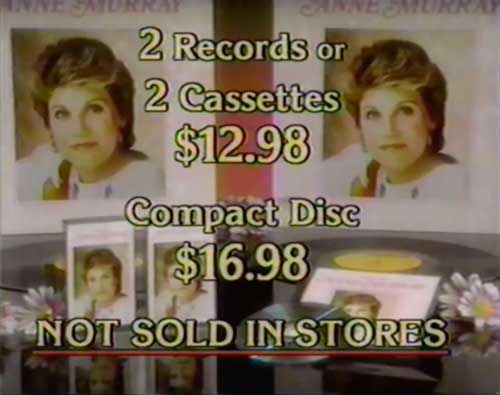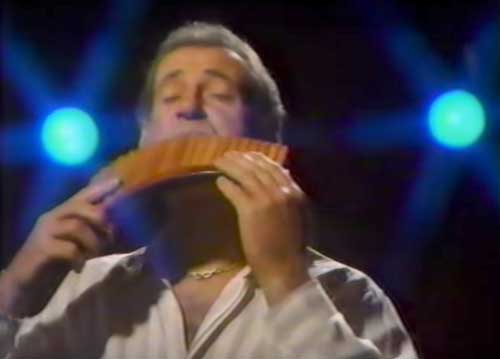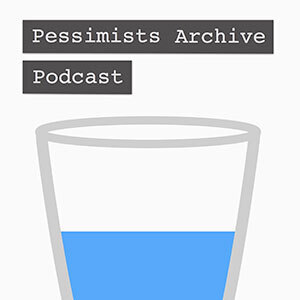Moldy Oldie Marketing
How the music industry’s TV-driven direct marketing strategies revived vintage hits, salvaged floundering careers, and brought us Zamfir’s epic pan flute.
Hey all, Ernie here with a lightly refreshed favorite from the archives, complete with a pan flute soundtrack. You fill up my senses like a night in the forest.
⬇By the way, be sure to give our sponsor below a look if you’re into podcasts.⬇
Why did people fear coffee, novels, and teddy bears?
In each episode of the podcast Pessimists Archive, we look at the moment that something new came along—something that’s commonplace now!—and try to understand why it freaked everyone out. Our goal: By understanding why people fear change, we can become better at embracing it.
“It’s tricky all right. Sometimes we’ll have $2 million spent before we sell one record. You’ve got to know when to sell what for how much where for how long.”
— Mickey Elfenbein, a senior vice president of K-Tel, the marketing company that popularized the music-by-mail approach to selling albums in the 1960s and 1970s, discussing the challenges of finding the right musical product to sell. The company, founded by Canadian farm boy Philip Kives in the early 1960s, wasn’t really built to sell music, but stumbled into the business in 1965 as the firm was looking to diversify. The company, known for its hard-pitch sales approach, figured out that people really loved songs on the radio from a variety of labels, and it compiled those songs onto a single record. It was a hugely effective model. (Kives, widely considered a business genius, died in 2016.)

Not sold in stores. Duhhhhhh.
The story of Heartland Music, the TV-commercial juggernaut that specifically aimed for older audiences
It makes sense that the greatest source of televised schmaltz ever created came from Lawrence Welk’s family tree—specifically, his son Larry.
Welk’s show went off the air in 1982, as the champagne music icon retired. Thanks to his longevity on television, his family had an empire of a business at their disposal.
But even as the elder Welk retired, his son was helping ensure that the family would have a spot on the TV for decades to come. That came in the form of Heartland Music, a direct-marketing company that was helmed by Ira Pittelman, who had found success selling disco compilations on television with his prior company I&M Teleproducts.
But Pittelman, according to a 2002 Billboard article, knew there was a bigger audience out there than simply selling hip compilations to the kids.
“[There were] all these people who were over 50 and uncomfortable going to record stores, and there was all this great music lying around in the vaults of the labels,” he explained. “So Heartland became a win-win situation.”
Welk Music Group had ties to Nashville, and as a result, the label found much of its success selling greatest-hits records for major country artists like George Jones, Loretta Lynn, and Conway Twitty, all of whom had been successful years before Heartland came around. But other artists, like Anne Murray and (yes) John Denver, were also good fits for the Heartland model.
If you watch a Heartland commercial from the ’80s, they all follow roughly the same strategy, a strategy marketing consultant Alan Bernhard laid out to Television/Radio Age in 1987.
“You do it like a concert or a video so that the audience falls in love with the performer,” Bernhard, who counted Heartland as a client, explained.
Bernhard, who would cut three lengths of commercials for Heartland—60 seconds, 90 seconds, and two minutes—played around 10 different song excerpts in the clips. He also noted that the commercials tended to be more popular with country artists, who didn’t see the commercials as evidence of a career slump. (For example, George Strait did a commercial with Heartland in 1991, at a time when he was one of country music’s most consistent superstars.)
It sounds like a concept that shouldn’t work—show different artists doing exactly the same thing with their best-known songs, then put a 800 number at the end of the commercial. But it helped the company sell millions of units—they included print catalogs with purchases of albums, and those catalogs at one point reached 35 million people, according to Billboard.
And some albums, through direct marketing alone, sold over a million copies. Not bad for a fairly repetitive style of commercial.
“He was dead as a doornail in America. All of a sudden, when the (TV) album came out on him, United Artists in America put out two albums. I went into a record store and they had a great big shooting match of nothing but Slim Whitman albums. So it triggered them to do something and no doubt Slim is benefiting.”
— Billy Deaton, a talent agent, discussing with Billboard the impact that this TV commercial had on Slim Whitman’s career in the U.S. in the early ’80s. Whitman, a countrypolitan-style musician whose song “Rose Marie” topped the UK charts for 11 weeks in 1955, found major success in the U.S. market after a firm named Suffolk Marketing decided to start selling his music in the 1980s. Suffolk generally was not picky about who it chose for these compilations—if an artist had at least one prior American hit, that was enough for Suffolk to work with. According to a 1980 Washington Post article, Whitman sold 2 million copies of a compilation album through direct marketing.

Admit it, this is at least 50 percent more impressive than playing the harmonica.
Heartland Music’s big breakthrough moment involved a guy with a pan flute named Zamfir
Of all the musicians to pass through Heartland’s long collection of commercials, by far the most captivating and unusual was pan flute maestro Gheorghe Zamfir.
A Romanian folk musician who had already played Carnegie Hall by 1973, Zamfir held a storied global reputation with his pan flute long before he showed up on television. But in a lot of ways, he benefited from the fact that the average American had no idea who the heck he was.
(He had a much bigger profile in Australia, however, thanks to his score for the hit Australian film Picnic at Hanging Rock, and in the UK thanks to his song “Doina De Jale” being used as the theme for the BBC’s The Light of Experience.)
For the average American channel-changer, he carried an air of mystery around him: He was foreign, played an instrument rarely seen on television, and was something of a blank slate culturally. We hadn’t decided what to think of Zamfir, so Heartland was ready to tell us exactly what to think about him.
Plus, his music was instrumental, which meant that his sounds evoked an international flavor without any of the messy language to get in the way. (Also, like John Denver, he could play “Annie’s Song” right in the commercial!)
He was “world music” without any of the discomfort that came with the term in the early 1980s. His tunes were very digestible. And on top of all this, he hated rock music.
“I think rock music is very bad for young people, for everybody,” Zamfir said in an interview with the Associated Press in 1985. “I’m absolutely sure if I listen to two hours of rock music I’m not in my best appetite, don’t sleep well and can’t create something valuable. I think it is very important that humanity live a quiet life.”
Considering all that, he was basically the perfect musician for Heartland Music to promote.
In a 1987 Television/Radio Age article, direct response advertising expert Alan Bernhard noted that Zamfir had a very appealing quality from a television-watching standpoint.
“He’s a very appealing-looking person and resembles [the popular French-Armenian singer] Charles Aznavour, so that’s what the spot had to capture,” Bernhard explained.
While Zamfir was closely associated with low-rent schmaltz as a result of his image running with late-night TV ads, his audience was anything but. Bernhard, through a location-based analysis, figured out that the pan flutist’s records actually attracted upper-class consumers.
“Bernhard, in seeing feedback on this commercial by zip code, says that response from New York’s Upper East Side has read like a ‘Who’s Who,’” the article stated.
To this day, he’s likely Romania’s largest-ever cultural export, and likely the only one ever to be sampled by Animal Collective.
Heartland Music (while itself having been subsumed in mergerdom into Collector’s Choice Music), ensured he would never be forgotten.
In the age of Spotify and Apple Music, the direct selling model isn’t nearly as effective at it once was, clearly. (While it obviously exists today, it’s generally not used for music so much, and certainly not for breaking an artist.)
Nonetheless, it’s a valuable model to study, because it highlights a couple of important things: One, the strategy that went into maximizing the sales of this music reflects a high level of polish and shine; and two, it highlights the importance of speaking to specific demographics.
In the early ’70s, the major TV networks actively tried to kill shows targeted towards rural audiences in favor of shows with urban settings, something called the “Rural Purge.” (I briefly covered it in my piece about television oddities from a couple of years ago.)
The interesting thing about this is that it aimed at shows not unlike those targeted by Lawrence Welk—those that skew older and have big niche audiences. The best example of this is Hee Haw, a show that survived for more than two decades after its cancellation by CBS.
Many of these ads targeted the kind of crowd that might have watched these demographic-focused shows. This was Slim Whitman’s crowd, and Slim Whitman’s crowd was still a major commercial force.
Richard Huntley, the president of Suffolk Marketing, emphasized that this was his crowd in a 1980 Washington Post article.
“We are special marketers, an alternative to the retail market,” Huntley explained. “You reach an extra part of the population that should and can be reached with television, especially people in rural areas who don’t have malls down the block.”
To put this another way: Heartland Music’s name wasn’t an accident.
--
Find this one an interesting read? Share it with a pal! And thanks again to Pessimists Archive for sponsoring.
:format(jpeg)/2017/07/tedium072517.gif)
/2017/07/tedium072517.gif)


/uploads/ernie_crop.jpg)